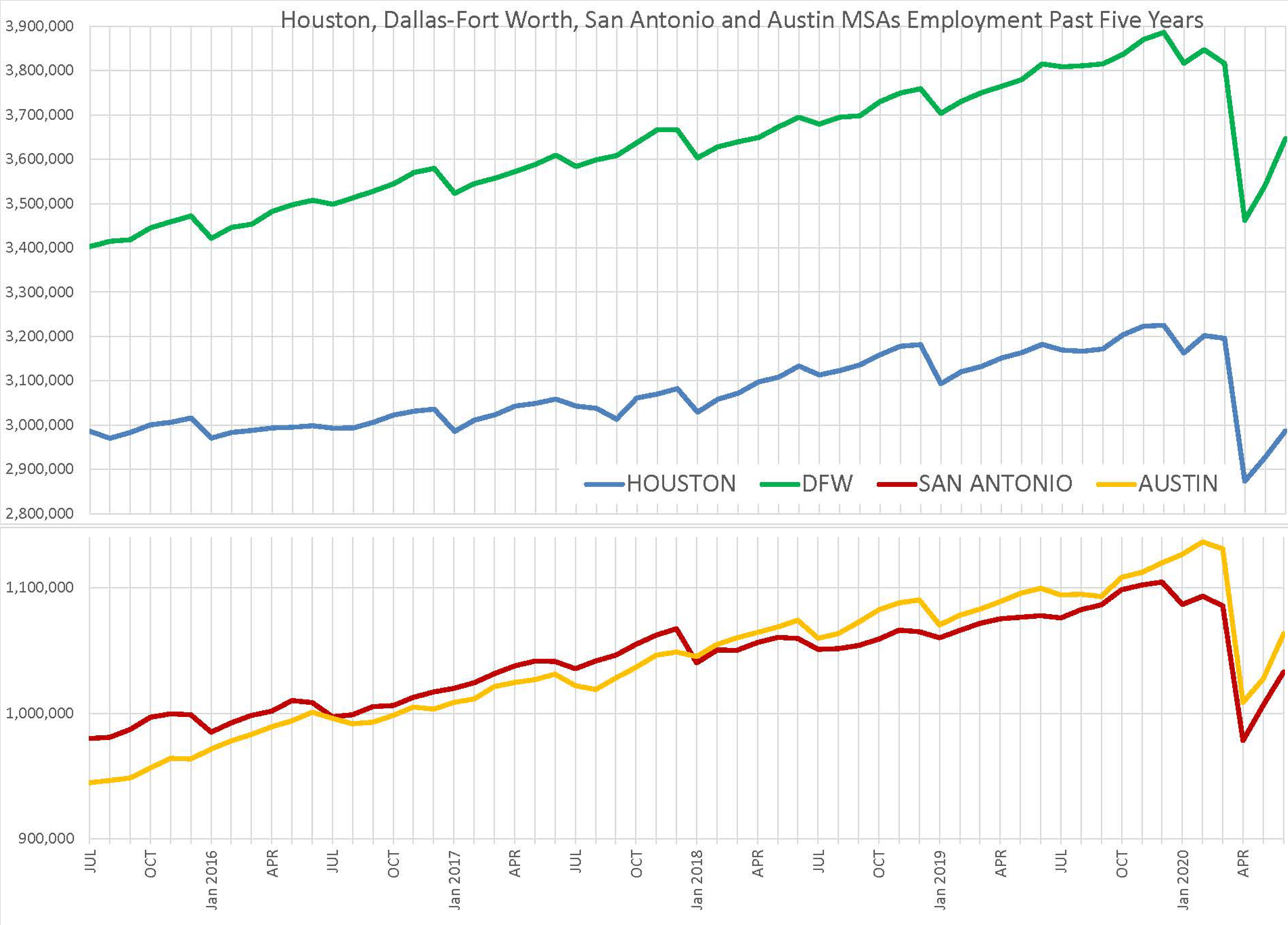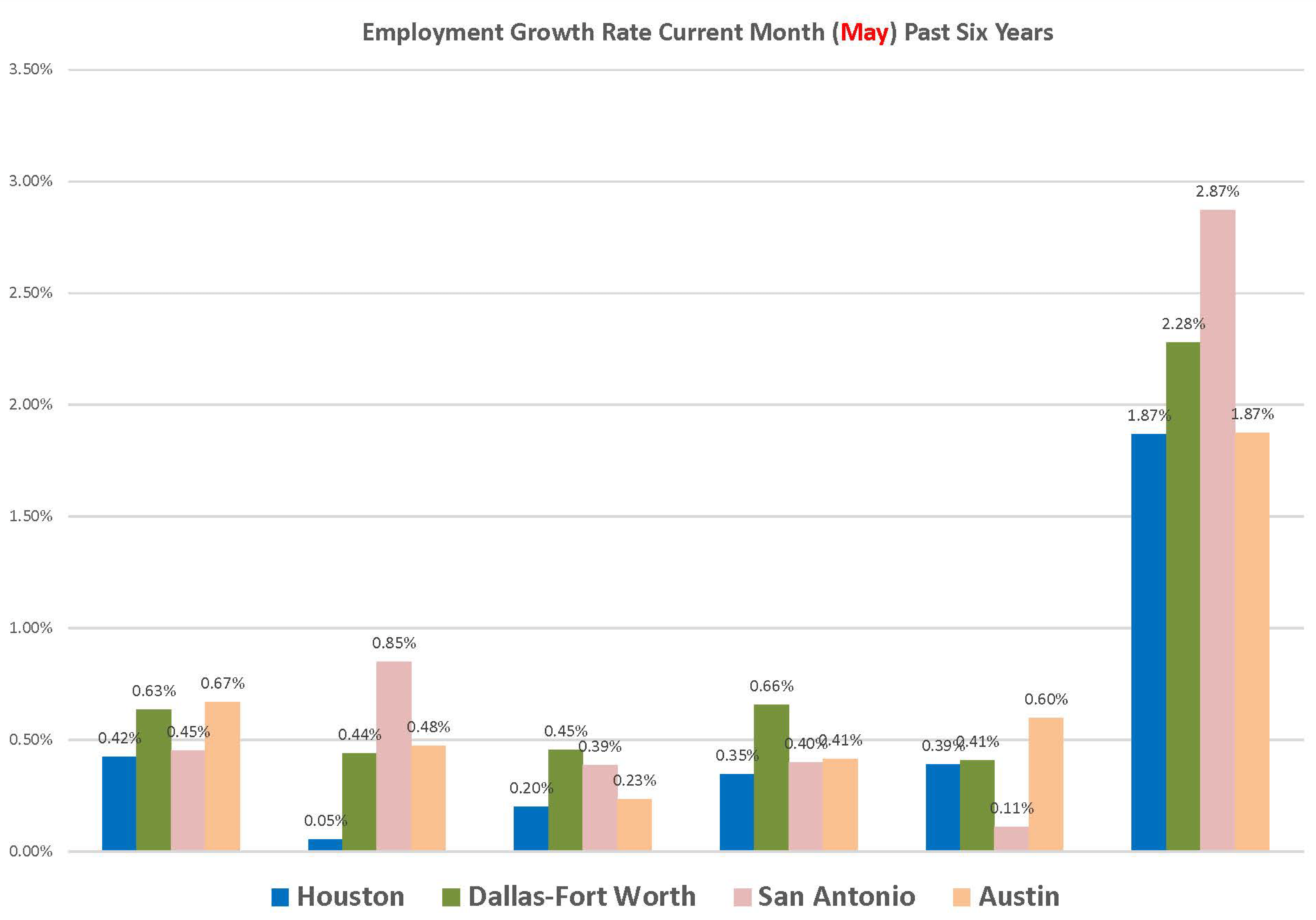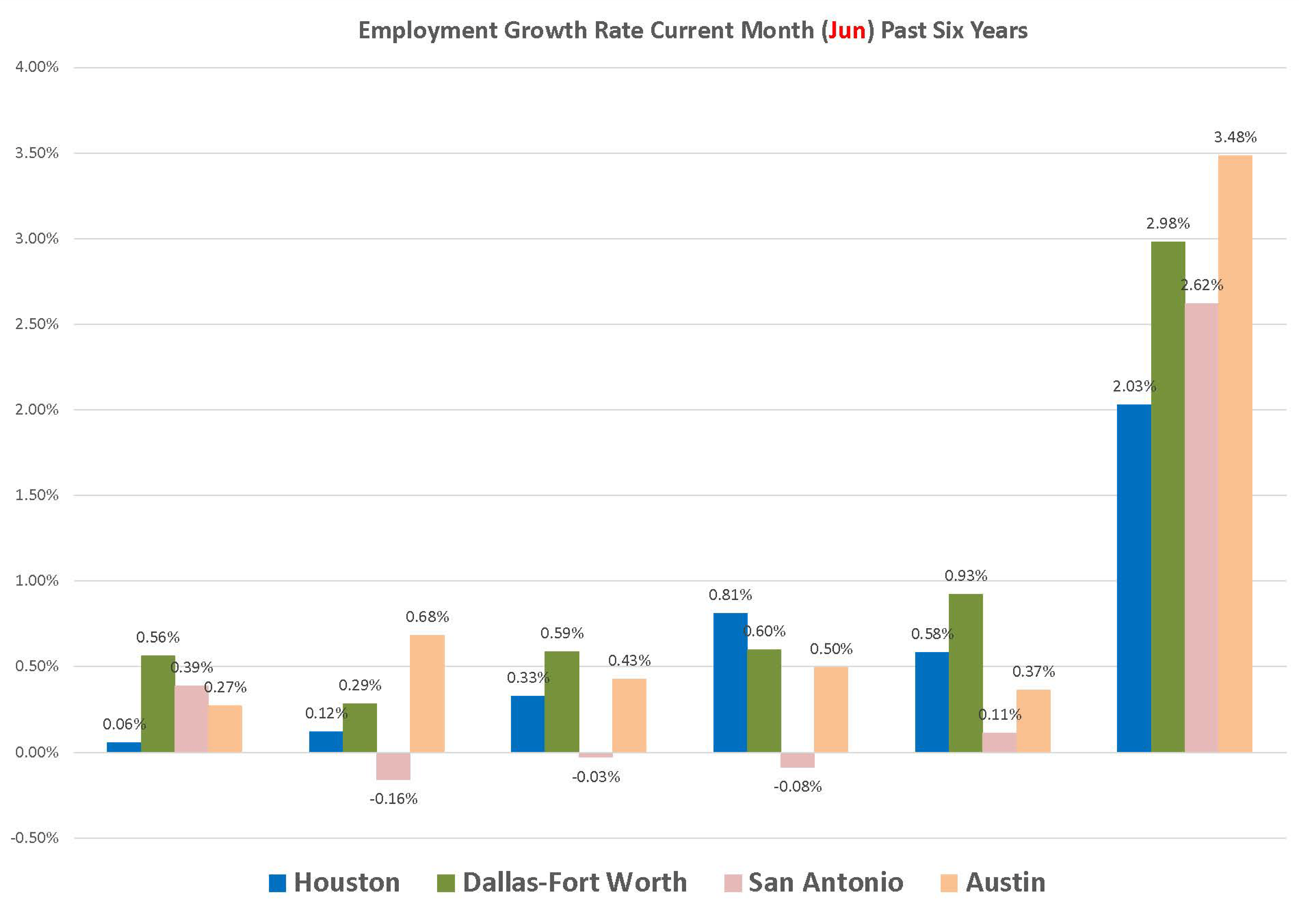Written by Greg Turner, MBA

Figure 1: These graphs show employment in the four largest MSAs in Texas over the past five years. After the COVID-related crash in March and April, we have hopefully seen the beginning of a strong rebound.
After a decade of robust employment growth, the COVID-19 pandemic this past spring brought the state and local economies to a crashing halt. In the most recent months, however, the story has turned from one of shocking devastation to signs of a strong rebound. This article scans the recent unprecedented event from the perspective of its impact on the labor market, and conjectures regarding its effects on our region, particularly West Houston.
At the onset of the pandemic, measures taken to arrest its spread shut down the economy, returning employment in the state’s four major metropolitan areas (MSAs) to levels not seen in five years. The dive wiped out the prior five years’ growth of 23% in Austin, 15% in DFW, and 14% in San Antonio. Houston’s 8% increase since 2015 was also lost (see Figure 1). Overnight, almost 1.3 million of the jobs in an aggregate market of 9.3 million workers vanished. Employment in the Houston MSA plunged over ten percent in March and April, from a peak of 3.2 million.
Looking sector-by-sector, the hurt was not distributed evenly. We in Houston took the brunt of it in Natural Resources, Mining and Construction. Almost 12 percent—34,000 local jobs—disappeared from this sector from January through April; not many are back yet. Generally, the larger urban areas (Houston and Dallas-Fort Worth) experienced declines across most segments, while the two smaller regions varied more from one sector to the next.
Anomalies included the Financial Activities sector, barely registering a change. Those holding government jobs also had little to worry about. The real bloodletting was in Leisure & Hospitality, this sector seeing 27% of all employment losses. Fortunately, there has been a substantial turnaround here in May and June.
Since the carnage of the early spring, however, all four of the state’s major metropolitan areas have recovered a significant amount of employment. The Dallas-Fort Worth and San Antonio MSAs have led the way, each regaining almost half of their losses. Austin is not far behind. Houston has recouped only about one-third. Nevertheless, the bounce back is broad and impressive (see Figures 2 and 3).

Figure 2: Things started to turn around in May. All of the major MSAs saw healthy job gains, or should we say “regains.”

Figure 3: June was even better. If these types of trends continue, the much hyped “V-Shape” economic recovery just might come to pass.
What does this mean for West Houston? First, most of the drop in Natural Resources, Mining and Construction is in Energy Corridor jobs, indicating some rough waters ahead for our real estate market. This may in turn foreshadow a slower recovery here than elsewhere in the “downstream” Leisure and Hospitality segment, which encompasses retail, restaurants, and hotels. Already in trouble due to online shopping, COVID restrictions may accelerate the so-called “retail apocalypse.” There are also other issues, not so localized, that nonetheless may impact us here. For instance, in-person offices may never return, virtual workplaces becoming the norm. At a Zoom conference I recently attended, the panel’s consensus was that smaller businesses with younger workforces are chomping at the bit to return to the office, but the older demographic more common in large corporate suburban campuses will keep working from home. You can imagine how this might impact Energy Corridor.
With two of the nation’s top five and four of its thirty largest metropolitan areas, Texas provides a wealth of data that has revealed the impact of COVID-19 on the labor market.1 Let’s hope for a continuation of the positive trends of the recent couple of months, and the improved prospects for the economy that these portend.
1 Data for the metro regions centered on Houston, Dallas-Fort-Worth, San Antonio, and Austin are drawn from the monthly Labor Market Information bulletin provided by the Texas Workforce Commission.
 About the Author
About the Author
Greg Turner, MBA is a self-proclaimed numbers junkie and budding futurist that likes to analyze and synthesize data. He has been an architect for 45 years and is the author of Construction Economics and Building Design: A Historical Approach. Turner is a member of the Association of Professional Futurists (APF) and the American Institute of Architects (AIA).
